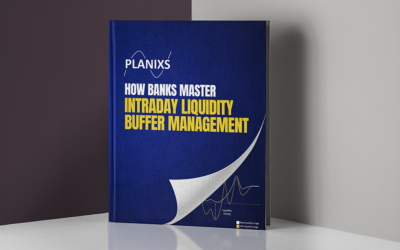Pete McIntyre, founding director at Planixs, speaks to The Banker’s Kimberley Long about how real-time payments are becoming more important, spurred on by the Covid-19 pandemic.
Kimberly Long:
Hello, and welcome to The Banker podcast series – Banking under pressure, exploring how the financial services industry is coping with the COVID-19 pandemic. In this series, The Banker’s Editors are interviewing industry experts from around the world to gather insights and advice on specific challenges, best practices and innovations that can help banks and their customers to manage during these tough times. I’m Kimberly Long, Asia Editor of The Banker, and today I’m speaking with Pete McIntyre, founding director at Planixs. Hi Pete, thanks for joining us today.
Pete McIntyre:
Hi, Kimberly. Great to be here.
Kimberly Long:
So, to start with, why is real-time such an important topic today?
Pete McIntyre:
I guess it is probably just worth putting this into a bit of context – real-time is all about being able to think and operate in a different way, and if you think about the changes that have taken place in society, and then ultimately businesses, you tend to go through various revolutions. People talk about us being in the fourth industrial revolution – the first one was water and steam powering machines; the second one was electricity driving mass production; the third one was computers coming in to automate that production – and in recent years, people talk about digitalisation and real-time is really part of that. It’s a fusion of different technologies that allow you to think, act and operate in real-time – and we sometimes call it the real-time revolution.
If you think about a company like Uber, they would not exist if we didn’t have this real-time capability, and if you look at it now, I think I read earlier on today, they’re worth $80 billion and they didn’t exist what eight, nine, 10 years ago. If you think about the taxi part of Uber, which is the most recognisable piece, the world has changed because of what they have done, because if you want to catch a taxi now, you pull out your Uber app, the app will tell you right up to date how long it’s going to take for a cab to arrive, even if one exists, how much it would cost, how long your journey would be – you could even check out the driver and so on. In terms of the driver or the supplier of the service, they don’t even need to leave the house if there’s not enough business, they can check that, get up to date information – they can be confident that they are going to be paid, that the customer is going to be where they want them.
Compare that to the old world, and the old world isn’t that long ago, after a night out, you’d be joining a queue, wondering whether there are any cabs going to arrive at the rank, or you’d be phoning up some number from the yellow pages – if you remember what that was – and you’d have to hope that the minicab actually appeared. All of that has changed and it’s changed because of the ability to do things in real-time and the real driver of that is the ability to get access to data and information and act on that information in real-time. There are many other examples, I mean, if you bring this into financial services and think about brokerage, go back to the days…it was all done on paper, on telephones, people filling in contracts by hand, posting them, people walking onto trading floors, meeting somebody face-to-face – all of that has been replaced by information available to the customer in real-time and a few clicks and away we go, the whole transaction is settled.
And if you bring that into banking more generally, what banks are facing, or enjoying, depending on which way you look at, is a real revolution in the expectation from customers because all of us as customers expect to operate much, much faster. So in terms of your bank, you want to be able to even download a banking app and sign up in minutes in some cases, you want to be able to make payments and expect that cash to arrive straight away. From the firm itself, you have got the ability now to move your assets around in real-time in a way that never happened before, and what that means ultimately to treasuries is you have to support all of that capability. You have got to deliver on the expectations of your front office, serving customers. You have got to deliver on all of your parts of the business expecting you to operate in a much, much faster way. So that’s why real-time is important, and that’s why it’s hitting banking now.
Kimberly Long:
And what do we mean by real-time treasury? And what is the link to intraday liquidity?
Pete McIntyre:
So again, it’s probably worth looking back at history and comparing that with where we are. So in the old world, what a treasury function did, was it had to manage the bank or the firm’s cash, it’s collateral – which could include securities, and it’s liquidity. And it did that frankly by guessing, and by guessing I mean you didn’t have any real information of what was happening right now (we’re recording this in the mid-afternoon) – all the treasury function could do is understand where everything was as of close of business last night, and then it would be a best guess at where it would finish by close of play today.
So that information was really its projection of what should happen. Now when you are therefore having to make guesses on where all of this collateral of any description is going to sit, then errors inevitably occurred, and still do in many cases. Those sort of areas could be because you don’t have enough liquidity in the right place at the right time, you might incur – whether it’s overdraft charges of some description – you may have to pay for very expensive overdrafts, you may have to make some very late decisions at the end of the day when you’re in a panic and realise you haven’t got the cash where you need it, or you could be missing payments – you might not be able to actually make payments because you’ve got the wrong balance where money is going out of the account before it arrived in.
So, if that’s the old model, what does real-time treasury mean? Well, in real-time, in a real-time treasury, you’re actually able to manage things intraday – during the day, rather than this best guess end of day. So I tend to describe this as having intraday control – now with intraday control, you know exactly where your cash and collateral is right now, you know where you expect it to be at this point, and if there’s a difference between what’s happening and what you expected to happen, then you can deal with the risks that occur.
So if real-time treasury is delivering this capability, success comes from having the right data in the right place and making the right decisions, and intraday liquidity is about making sure you’ve got the liquidity exactly where you need it at the right time – you’ve not got too little liquidity at this point, because that’s going to cause operational issues, it’s going to cause you costs as you’re not able to pay and so on, but also it’s about not having too much liquidity – so if you just decide to respond to this by having oodles of liquidity lying around, just in case, then that can be extremely expensive and very inefficient.
Now if you’ve got the real-time treasury that I’ve been describing, then you’ve got a really good chance of optimising your use of intraday liquidity, which keeps everyone happy. It keeps your internal stakeholders happy because you’re operating as planned and hopefully very efficiently, and it also keeps regulators happy – because regulators have over the last, probably the last decade, started to take an increasing interest in intraday liquidity and making sure that the banks they regulate have got the liquidity they need at the right time, so if things go wrong, then they can get themselves out of trouble.
Kimberly Long:
And how has the need for real-time capabilities increased during the COVID-19 pandemic?
Pete McIntyre:
Yeah, it’s been an interesting experience – when all this started back in spring of this year, or spring in the Northern hemisphere this year, it was a bit strange to think about how people would react, lots of banks and treasurers that I’ve been speaking with, would they put on pause any planned improvements in this space? Actually, it’s been the other way around, I think the pandemic has really proven that having real-time capability is going to make your life easier, and there are probably three drivers for that.
The first thing is that there’s been much more volatility in the market in general, so that means basically today is not going to play out the same as yesterday did, so all of the norms and the behaviors that you observed over many days, months, weeks, years – they don’t necessarily give us any help in understanding what’s going to happen now, so you really do need to have your fingers on what is going on, so having that real-time capability is extremely important. And when I speak to people who have made investments in improving that capability, they’re very pleased that they have done, particularly as they started to have their treasury function scattered around, often working from home, being able to access the same data at the same time has proved invaluable. So that is the first thing, it is the volatility.
The second thing is basically increased scrutiny – so, if you are the treasurer, you’ve spent a lot of time at various points in the last six months or so actually having to respond to regulators. For example, asking for much more frequent updates about what’s going on, testing out whether you do have the capability to run your operations in real-time, making sure you understand your liquidity positions and so on. Also you’ve got a whole series of internal stakeholders, let’s call them management, asking for information constantly, and if you can only say, well, I’ll tell you what’s happening today when I get the information tomorrow, you’re not a very popular individual. So, it’s being able to actually have the data needed to pass to the various people asking the questions, but also to get that information out there very quickly and without disrupting your day to day activities.
The final piece inevitably is around cost – and the costs of liquidity have increased in this period, and there’s really two ways for doing this – the most obvious thing is has it cost more or does it cost more to actually access liquidity during the day? Yes, that is the case, it can be more expensive. So although we’ve seen a reduction in interest rates, that’s not necessarily found its way through to how you might get charged for access to cash, and that might be because people are less willing to give you credit, so you may have to either pay for credit lines or start to provide collateral to get credit lines intraday.
It is also the other way around, where paradoxically, it can cost you money to have too much cash laying around, and this is really because of the behavior of central banks and governments, whereas interest rates decreased to almost zero, they start to penalise you for having long balances for being in too much credit, and a good example of this is in Poland, where they’ve had a banking tax for a while now where you get charged a certain amount for balances over a certain level, and the reason for that is the central bank really wants the money out in the economy, hopefully doing some good rather than just being held on deposit, and with interest rates so very, very low there is no value to holding that cash at the center and if you’re paying a tax on it, you’re actually losing money every day.
In my example of Poland, I was speaking to banks there whereby what they found, particularly in the early stages of the pandemic, is there was a bit of a flight to quality and a lot of their customers started to deposit money with them, which they didn’t expect, so they could get to the end of the day and be extremely surprised to find they had huge amounts of cash sitting in their central bank accounts too late in the day to do something about it, like transfer it out into different currencies, and that incurred the banking tax for them – so actually their interest in improving this capability of getting that intraday insight of getting that real-time view is driven by avoiding the negative interest rates and the banking tax rather than for them having to pay for liquidity as it is.
So it’s probably those three key drivers I think.
Kimberly Long:
Okay, that’s great. Thank you so much for joining us today Pete.
Pete McIntyre:
No problem – it’s been great to talk to you. Thanks Kimberly.



